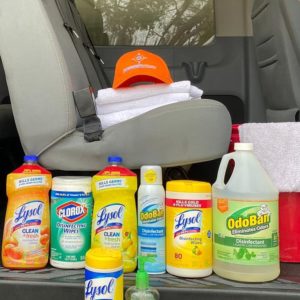Coronavirus continues to spread across the world and Canada may be better prepared than others to weather the crisis. Public health officials are reinforcing the importance of good hygiene especially for public transit users. What is Driverseat doing to stop the spread of virus COVID-19?
On Sunday, Metrolinx said a woman who tested positive for COVID-19 was a passenger on a GO transit bus to Richmond Hill, Ont. Another Toronto man used public transit for several days before also being diagnosed with COVID-19 on March 5. He had previously traveled to Las Vegas.
This is a scary news for people who are regulars on public transport especially when the number of cases of corona-virus are on the rise. Public spaces like buses, trains and stations are laces were people usually gather in large numbers. The places have potential to increase the spread of Corona-virus also known as COVID-19.

How corona-virus spreads?
As per Dr. Tedros Adhanom Ghebreyesus, director-general of the World Health Organization “This virus is not SARS, it is not MERS, and it is not influenza, said at a press conference Tuesday.”
These numbers are constantly changing, the best current estimates are that each infected person will on average infect between two and four others,
Global news reported from Dr. Alon Vaisman, an infection control and infectious diseases physician at Toronto’s University Health Network that “COVID-19 spreads less efficiently than flu and transmission does not appear to be driven by people who are not sick. Like all other respiratory viruses and corona-viruses, this corona-virus is spread through droplet transmission”
What that means is that when an infected person coughs or sneezes, they expel tiny water droplets containing the virus to a distance of about six feet away, he said. When you bring these droplets to a mucous membrane, like your eye or your mouth, that’s how you might catch the virus.
Protecting yourself on public transport
Hand hygiene must be impeccable at public transport. If you are going to be touching high contact surfaces make sue to use a good hand sanitizer or wash hands afterwards. Remember not to touch your face.
[video width=”400″ height=”224″ mp4=”https://www.driverseatinc.com/wp-content/uploads/2020/03/89828017_216071379450133_1568654362966753280_n.mp4″][/video]

Some Canadian transit companies have stepped up to clean vehicles and stations and switched to antimicrobial cleanser as a precaution. Transit agencies in Montreal and Vancouver said they, too, are taking cues from public health officials, who have long maintained that individual measures such as washing hands regularly, covering coughs and sneezes and staying home if ill, offer the most effective protection from the virus
Driverseat Response
Some Canadians have resorted to avoid Public transport and use private shuttles for their family needs. Driverseat shuttles are disinfected with wipes regularly. People recognize that risk of getting infection is extremely low on Driverseat shuttles.

Company president Brian Bazely emphasizes on getting daily disinfectant
wipe down of shuttles and office space. Driverseat works with Roxton industries
to make sure they always have quality product on hand.
Troy Cushman of Driverseat Newmarket make sure that shuttle gets wipe down after every trip.
In reality, public transit organizations need to do a good disinfectant wipe down at the same time transit users need to do his part of good hygiene and ensure they aren’t spreading anything to their peers. If you have symptoms of COVID-19, stay home.




